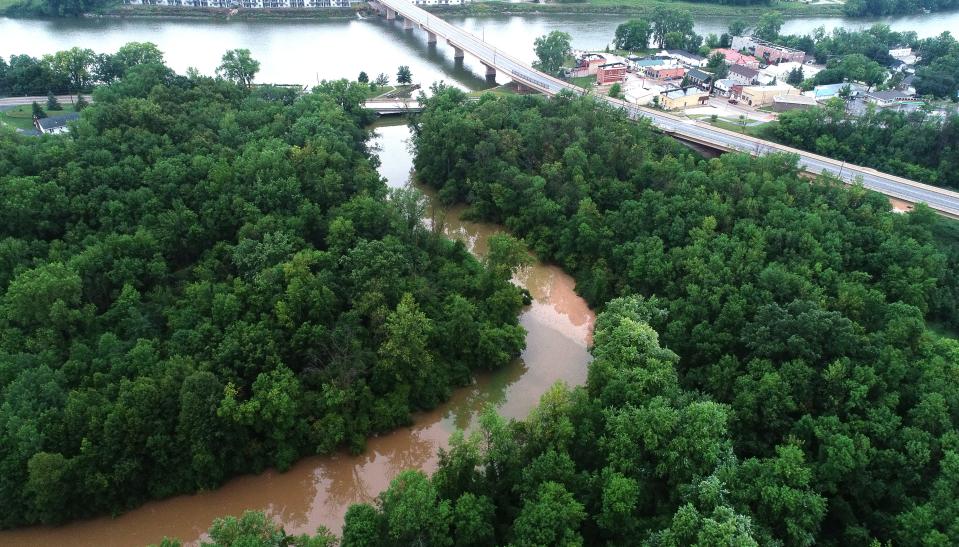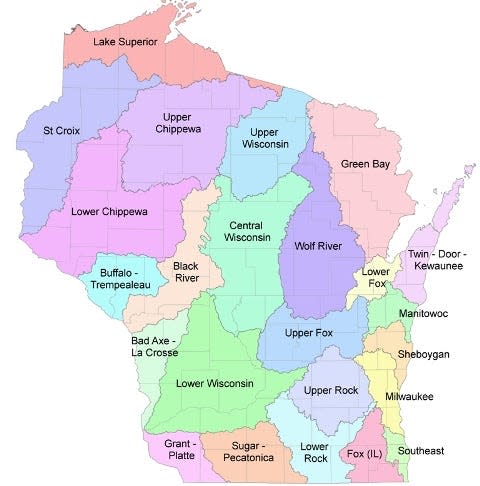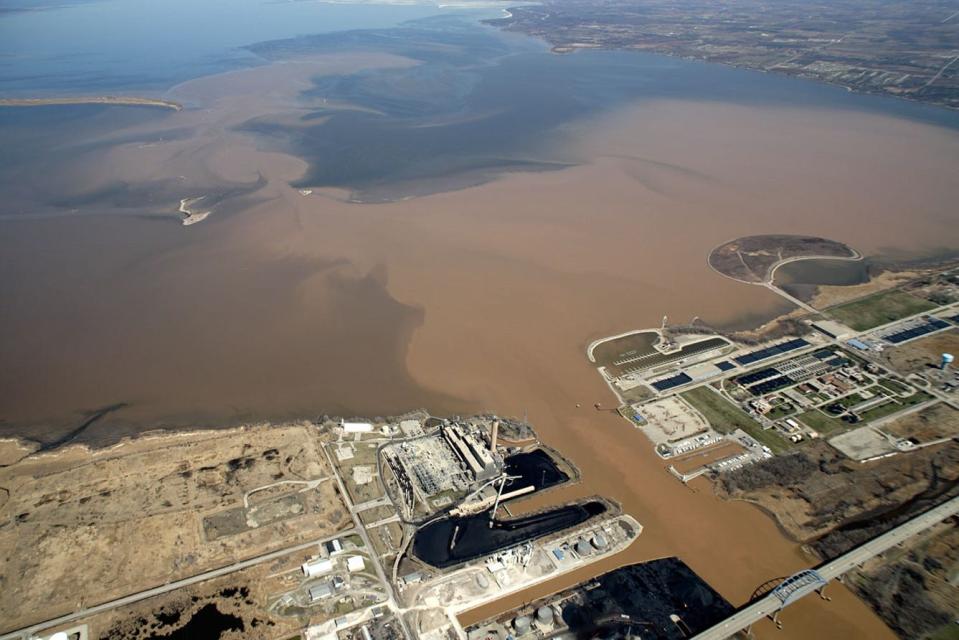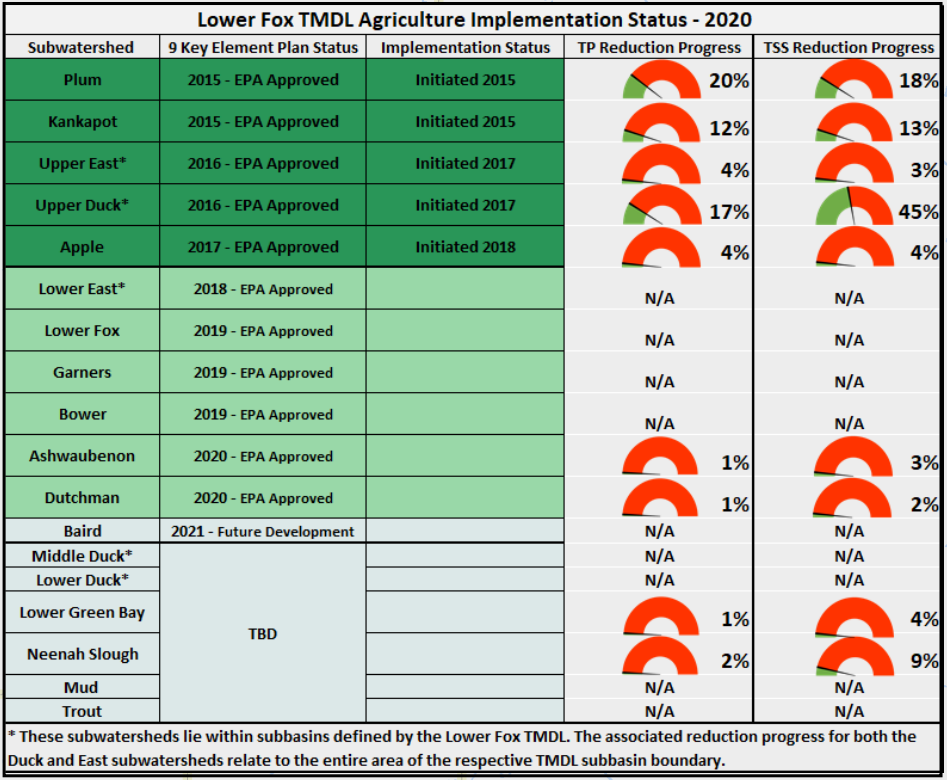Wrightstown seeks to clean up Plum Creek, the 'chocolate milk stream' flowing into the Fox River
WRIGHTSTOWN - Plum Creek has been riddled with water quality issues over the years. With the help of a federal grant, the Village of Wrightstown is looking to address some of those issues to improve the water and its downstream effects.
Formerly teeming with wetlands and natural areas, the land surrounding Plum Creek has since been converted to agricultural production, among other developments. The resulting landscape is no longer able to store water from storm events, which are becoming more frequent amid climate change, meaning there's been more flooding and erosion along the streambank.
Runoff pollution from growing agriculture has brought phosphorus from manure and fertilizer into the creek, which flows into the Lower Fox River. This contributes to downstream issues like algae blooms and subsequent "dead zones" along the Fox River and in the bay of Green Bay.
RELATED: 'The Power of the River,' a documentary about the Lower Fox River, premieres Aug. 23 and 25
Pollution has also led to the inundation of sediments, creating an unattractive brown stream that cuts through the center of the community.
Its condition is lamented by residents and village officials alike.

“As a lot of aerials will show throughout the year when you look at Wrightstown, you’ll see this nice chocolate milk — for lack of a better description — stream coming out of Plum Creek," said Travis Coenen, Wrightstown's village administrator.
To clean it all up, Wrightstown is undertaking a nearly $800,000, three-year project in partnership with the Fox-Wolf Watershed Alliance and Outagamie County Land Conservation Department. The project will be launched at a meeting of the Wrightstown Village Board on Sept. 6.
The project will focus on the first 1-mile chunk of the nearly 14-mile creek starting at its mouth near the Wrightstown Boat Launch. It will include streambank stabilization using a variety of techniques, water control through dams and agricultural runoff treatment systems, and public outreach efforts.
The project's goals are both lofty and numerous. When completed, it will:
Stabilize about 1 mile of streambank
Detain and treat over 44 million gallons of water annually
Reduce total phosphorus by 619 pounds per year
Reduce total suspended solids (sediment) by 476 tons per year
Collect and slow the flow of water across the landscape
Reestablish the original width of the stream
“All in all, the project is to help with water quality," Coenen said. "It’s something that we’ve been trying to do within our community as far as making sure that stormwater is treated properly so we can help with all the efforts up and down the Fox River that communities and counties are doing to try protecting our water quality and restoring that recreational, natural resource that we all have.”
'We're still on the uphill climb'
According to the Wisconsin Department of Natural Resources, Wisconsin's water is made up of 24 river drainage basins, which are areas of land that drain to a river, and hundreds of watersheds within those basins. A watershed is essentially a smaller version of a basin.

The Plum Creek watershed is part of the Lower Fox River basin, draining to the world's largest freshwater estuary, Green Bay. The creek has been listed on the DNR's impaired water list since 1998 due to elevated water temperature and degraded habitat caused by sediment. In 2008, phosphorus was added to the degraded habitat impairment, and biannual evaluations since 2012 continue to confirm the phosphorus problem.
From 2015 to 2017, Andrew Hudak — who is currently the DNR's east district water resources supervisor — was responsible for conducting "targeted watershed assessments" throughout the Lower Fox River basin to determine the overall condition of specific watersheds, including sub-watersheds like Upper Plum Creek, Lower Plum Creek, and West Plum Creek.
Through these three sub-watershed assessments, the DNR was able to get a snapshot of Plum Creek's "contemporary condition" and provide general recommendations for the watershed, Hudak said.
What did they find? That over 80% of the land in the Plum Creek watershed is used for agriculture; that the creek is one of the largest contributors of phosphorus and sediment in the Lower Fox River and the bay of Green Bay; and that the watershed has poor aquatic life and habitat.

"Our contemporary condition assessment is the watershed is still highly impaired and still highly impacted from sediment and nutrient concentrations," Hudak said. "There's still a lot of work that can be done out there to improve instream conditions to Plum Creek."
The DNR's main tool for addressing impaired waters is a "total maximum daily load" analysis, which is the amount of a pollutant that can go into a body of water without compromising water quality standards.
"It's essentially a diet for the watershed to try and achieve our water quality goals," Hudak said.
The DNR began developing a TMDL for the Lower Fox River basin in 2006, and it entered the implementation phase in 2012, continuing to 2040. The goal is to reduce phosphorus loadings in the Lower Fox River basin by 59% and sediment by 55%.
Plum Creek has to reduce its phosphorus loading by 77.2%, or 24,376 pounds per year. Of that, almost 98% will need to be reduced from agriculture. It has to reduce its sediment loading by 70.4%, with the same percentage needing to come from agriculture.
As of 2020, Plum Creek is about 20% of the way there for agricultural phosphorus reduction and 18% for sediment.

"We're still on the uphill climb of trying to get to where we want to go with water quality conditions out in this area," Hudak said.
That's why it's important that there are so many projects — like the upcoming Plum Creek cleanup project — happening in the Lower Fox River basin right now.
"It's not just one particular project. It's a whole concert of different projects that partners are working on," Hudak said. "That's really what it's going to take in not only the Plum Creek watershed but also in all of these other watersheds, to really get to where we want to go in the Fox River."
He also said that the solution is complex and will take a long time. "It's going to take a lot of energy, a lot of motivation, a lot of inspiration and, unfortunately, money as well to be able to support all of these efforts."
Plum Creek project was many years in the making
One of the partners in the Plum Creek improvements is the Fox-Wolf Watershed Alliance.
The Appleton-based nonprofit organization has been working since 2015 to improve water quality in the Plum Creek watershed, said Executive Director Jessica Schultz.
Thanks to grant funding awarded by the EPA through the Great Lakes Restoration Initiative, she said the alliance has worked with the Outagamie, Brown and Calumet County Land Conservation Departments to help farmers implement practices like cover crops and no-till farming to reduce nutrient runoff from their fields.
Additionally, the alliance has funded practices that store water to help improve water quality. "Increasing water storage on the landscape is an important component to improve water quality as increased intensity of storms is causing increased runoff and major erosion to our streambanks," Schultz said.
So when an EPA grant opportunity for streambank restoration came up in 2021, the alliance reached out to the village of Wrightstown to see if it would be interested in partnering to install water storage structures and restore some of Plum Creek's streambank.
From there, the partnership naturally formed, Schultz said. The Outagamie County Land Conservation Department also came on board for project design and implementation, and the project was awarded the $599,000 Great Lakes Restoration Initiative grant earlier this summer. The village of Wrightstown is also chipping in $200,000.
According to Schultz, the collaboration and funding go hand in hand.
"Partnerships like this increase chances that these federal grants will be awarded and important conservation work can be done in our community."
Contact Kelly Smits at (920) 431-3632 or ksmits@gannett.com. Follow her on Twitter at @kellymsmits.
This article originally appeared on Green Bay Press-Gazette: Why Wrightstown is cleaning up Plum Creek, the 'chocolate milk stream'

